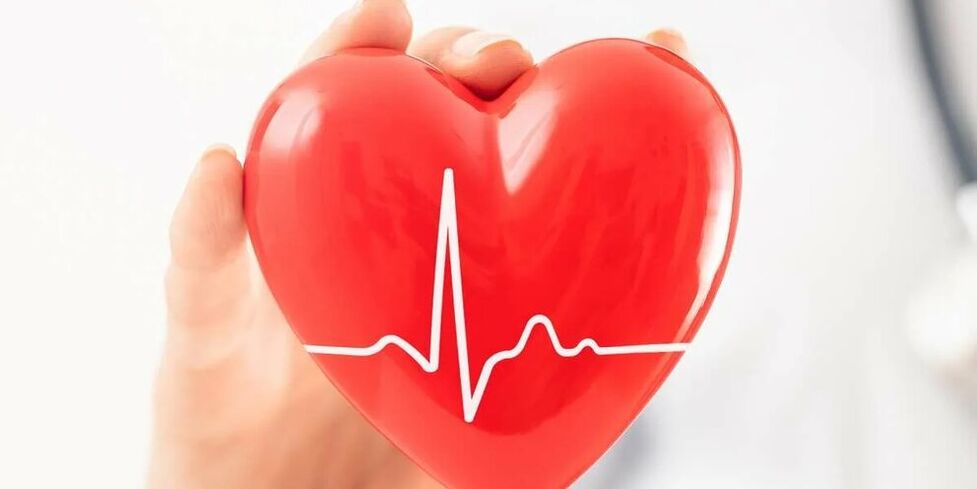
Hypertension, or arterial hypertension - a condition characterized by stable, that is, detected by repeated measurements, increased blood pressure. Accompanying many diseases, it is considered a risk factor for developing dangerous complications from the cardiovascular system, including stroke of myocardial and stroke. Hypertonic disease, as the leading cause of the pathology under consideration, requires taking medication, normalizing the patient's lifestyle and food.
Blood pressure is a force by which the blood flow acts on the walls of the blood vessels. Such pressure at the time of heart contraction is called systolic, and during its relaxation - diastolic. The range of normal values for these indicators is quite wide.
During numerous observations, scientists concluded that the risk of cardiovascular complications increases with any additional increase in blood pressure by 10 mm Hg. Art. Already starting with a level of 115/75 mm RT. Art. However, a reduction in the drug in pressure only above 140/90 mm turned out to be appropriate. Rt. Art. , Therefore, it is precisely such a value that is taken as a criterion for determining arterial hypertension.
Reason
In approximately 90% of cases, hypertension becomes the cause of a stable increase in blood pressure. Such a diagnosis is made to the patient when other diseases associated with hypertension were not found during examination. Among the latter:
Regular use of a number of medicines can also cause an increase in blood pressure. These include oral contraceptives, non -steroidal anti -inflammatory drugs, amphetamines, corticosteroids, medicines containing erythropoetin, cyclosporine, cocaine.
The possibility of cardiovascular disease, including hypertension, is in a close association with the following risk factors:
ClaSSIFICaTION
If it were possible to identify the disease leading to an increase in blood pressure, arterial hypertension is called secondary or symptomatic. In the case of an unidentified cause of hypertension, it is considered primary, caused by hypertension.
The latter has a scenic stream:
Arterial hypertension is divided into several degrees, depending on the maximum indicators of measured blood pressure:
There is also an isolated form of arterial hypertension, in which only systolic pressure figures in normal diastolic pressure.
Symptoms
Often an increase in blood pressure is not associated with a deterioration in well -being and can go unnoticed for the patient, so it is so important to measure blood pressure regularly, especially older and elderly people.
The following symptoms may be manifestations of hypertension:
A sharp jump of high blood pressure, accompanied by a pronounced deterioration in well -being, is called a hypertensive crisis. Most often, it occurs with an increase in systolic pressure of more than 180 mm Hg. Art. and/or diastolic over 120 mm Hg. Art. At the same time, the patient has weaknesses, nausea, vomiting, which does not bring relief, damaged consciousness, anxiety and fear, muscle tremors, chest pain.
Complications
A stable increase in blood pressure with hypertension significantly increases the risk of cardiovascular pathologies, including the patient's life. These include:
Troubleshooting
The main symptom of hypertension is a stable increase in blood pressure, detected at least three dimensions in different days during a calm environment. In the first measurement of blood pressure in a hospital or clinic for the correctness of the results, it is important to respect the following rules:
The doctor in an interview with the patient clarifies at what age the pressure initially began to increase, if there are symptoms such as snoring with respiratory stops in a dream, periods of muscle weakness or sudden palpitations with sweating and headaches, and unusual urine dirt. It is also important to find out what medication and biode he gets.
Within the first stage of the exam, the following tests are performed for hypertension:
In the event of a suspicion of a hereditary predisposition to the disease, it is possible to determine the polymorphism of genes related to the development of arterial hypertension.
To clarify the risk factors for the development and identification of existing cardiovascular pathologies for hypertension, instrumental diagnostic methods are used:
With hypertension, controlling blood pressure at home is important by keeping a diary in which it is necessary to adjust all the results of time measurements, taking medication and stress episodes that can provoke an increase in blood pressure. At the same time, measurements should be performed in a sitting position, after a few minutes of rest, holding their hand to the same level as the heart.
Treatment
With a moderate and low risk of cardiovascular complications, the patient is only recommended to change in lifestyle, diet correction, weight loss, increased physical activity and special gymnastics for hypertension, rejection of bad habits in the background of regular blood pressure. Often these measures are sufficient to normalize blood pressure.
The diet for hypertension includes limiting table salt, caffeine, sharp, salty, smoked and spicy dishes, products with a high fat content, offal, oil cakes and alcoholic beverages. It is permissible to use no more than 5 g of salt a day out of the disease irritation. The recommended daily fluid rate is 1-1. 2 liters.
In the case of unsuccessful non -tank treatment for several months, as well as with a high risk of complications, addressing hypotensive therapy using hypertension medication, whose purpose is a reduction in blood pressure less than 140/90 mm. Rt. Art. For patients with diabetes or persons already suffering from cardiovascular system pathology, the target pressure level is even lower-130/80 mm. Rt. Art.
Modern treatment of hypertension medication involves a combination of two or more medicines from the following groups:
Most of them are produced in the form of tablets from hypertension.
PREVENTION
Prevention of deterioration of hypertension involves timely diagnosis and therapy for diseases of cardiovascular, nervous, urinary and endocrine systems, ruthless followed by physician recommendations, including non-syndical treatment and medication, as well as regular blood pressure measurement.























